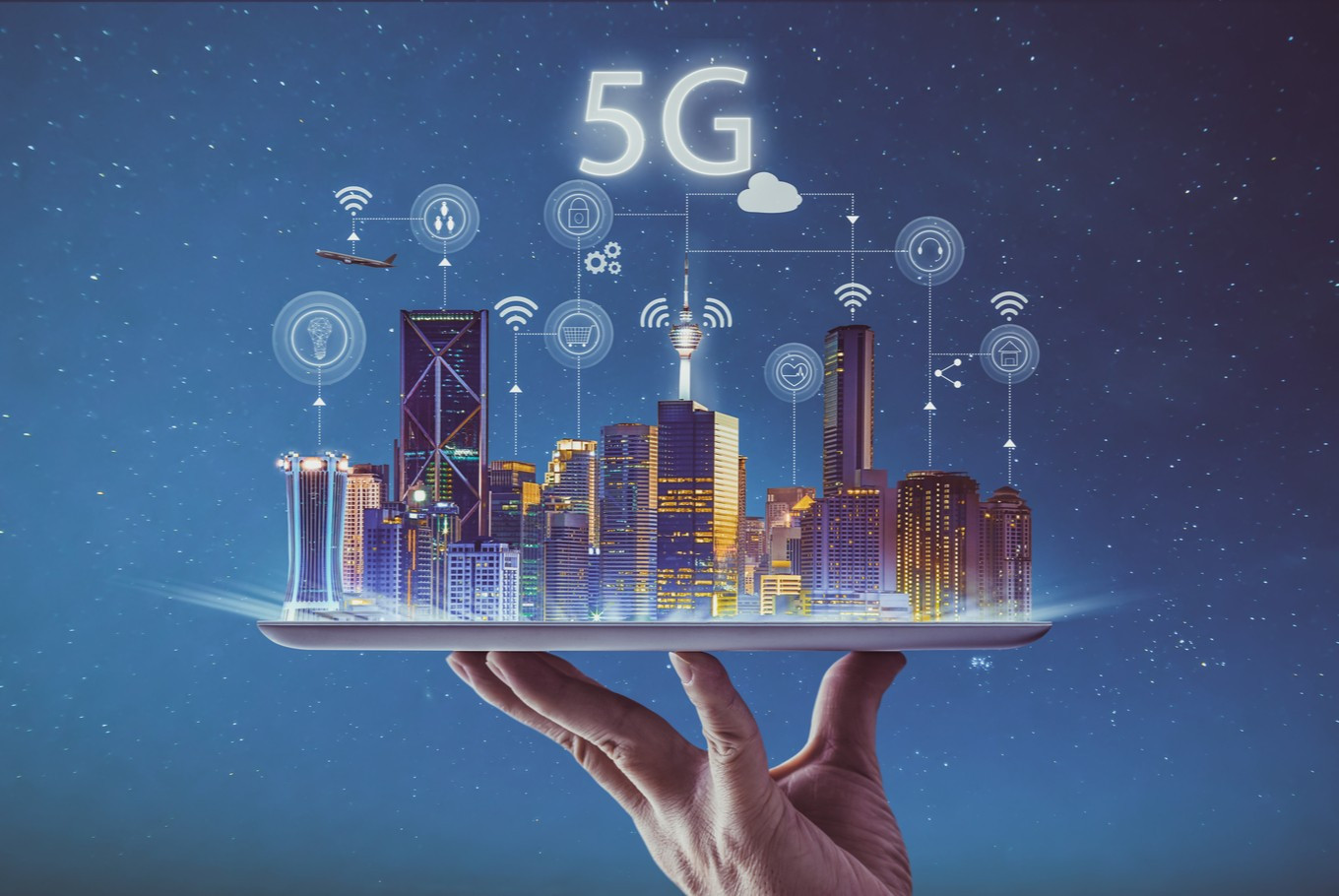Popular Reads
Top Results
Can't find what you're looking for?
View all search resultsPopular Reads
Top Results
Can't find what you're looking for?
View all search results5G to contribute 9.3 percent to GDP in 2030: Study
The benefits can only be realized once the government releases spectrum for 5G from 2021 to 2023.
Change text size
Gift Premium Articles
to Anyone
F
ifth-generation communication technology, also known as 5G, will add Rp 2.8 quadrillion (US$188 billion) to Indonesia’s economy by 2030, making up 9.3 percent of gross domestic product (GDP), a recent study projects.
The study, conducted by the Bandung Institute of Technology's Industrial and Research Affiliation Institution (LAPI-ITB) and commissioned by telecommunications company Axiata Group and Qualcomm International, also noted that 5G could create 4.4 million jobs, and increase productivity to Rp 9.4 million GDP per capita in the next decade.
However, the benefits can only be realized once the government releases spectrum for 5G from 2021 to 2023. LAPI-ITB researcher Ivan Samuels said 5G could actually contribute up to 9.5 percent to the nation’s 2030 GDP if the government rolled out an “aggressive scenario” and made 5G available by 2021.
“If Indonesia fails to meet the 2023 deadline for 5G implementation, then we can lose all of that potential,” Ivan Samuels told an online discussion on Thursday. “The key takeaway for 5G implementation is the faster, the better. By accelerating spectrum availability in the early years, Indonesia can harness greater economic benefits.”
Indonesia has been struggling with freeing up spectrum for 5G as many of its bands are occupied and some bands are bound to agreements enabling the incumbent to use the spectrum until 2024.
The Communications and Information Ministry has planned to free up 1,880 megahertz (MHz) of spectrum to enable 5G network, especially in the middle band ranging from 2.3 gigahertz (GHz) to 3.5 GHz, which can cover a broader area and a provide faster connection.
The head of Indonesia’s 5G taskforce, Denny Setiawan, said during the webinar that the government had included 5G spectrum availability in Indonesia's 2020-2024 National Medium-Term Development Plan (RPJMN). The government is planning to auction off the 2.3 GHz spectrum this year.
“We have also implemented a neutral technology policy so operators can deploy 5G on existing bands when the ecosystem is ready,” he said, adding that the government was also discussing key regulations such as spectrum farming and spectrum sharing in the omnibus law bill.
The Communications and Information Ministry’s post and information resources and equipment director general (SDPPI), Ismail, said Indonesia needed to roll out 5G to support the realization of the Making Indonesia 4.0 Road Map. Developing quality ICT services for 10 super-priority tourist destinations and enabling 5G in the new capital city would also require new technology.
Meanwhile, Axiata Group chief corporate officer Asri Hasan Sabri said other countries in the Asia-Pacific had started to free up mid-band spectrum and were on their way to implementing commercial use of 5G.
Thailand has auctioned off almost 3.000 MHz of spectrum in February and it has started building the 5G network this year, he said. Sabri added that the country was projected to be the first in Southeast Asia to launch 5G as a premium service.
A GSMA Mobile Economy Asia Pacific 2020 report says that 5G will make up 5 percent of the total internet connection in Indonesia by 2025. The number is the lowest among Asia-Pacific countries in the report as 5G connection rate in India is predicted to reach 7 percent, Singapore 34 percent and South Korea leading the region with 67 percent.
“With the support of cross-sector stakeholders, the government can develop a national 5G and IoT policy and manage spectrum allocation to ensure Indonesia does not lag behind and can stay ahead of the race,” said Qualcomm Technologies vice president ST Liew.
Despite the obstacles, the ITB study showed that almost 70 percent of consumer and industry players want to be early adopters of 5G.
Consumers expect 5G to deliver high-definition video streaming and faster downloads. While industries such as entertainment and manufacturing expect 5G to increase their revenue by 10 percent and bring up to 20 percent cost efficiency.










